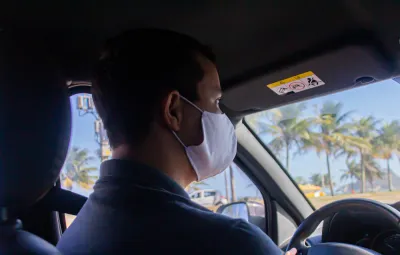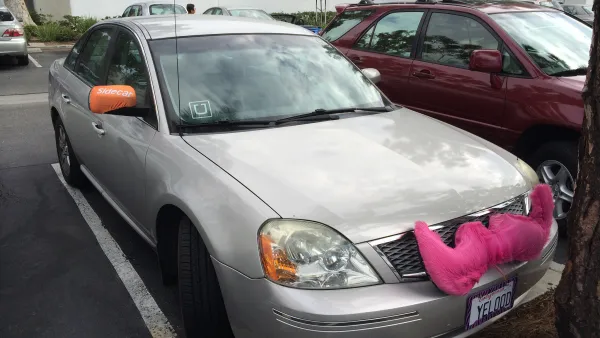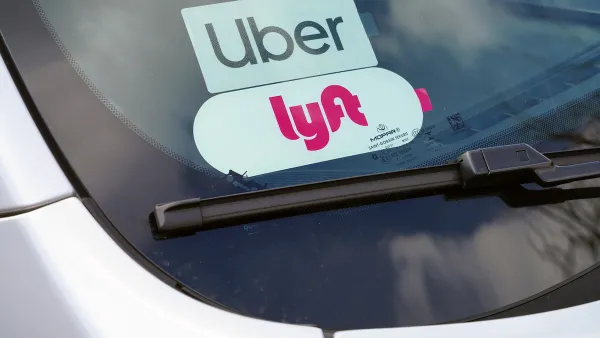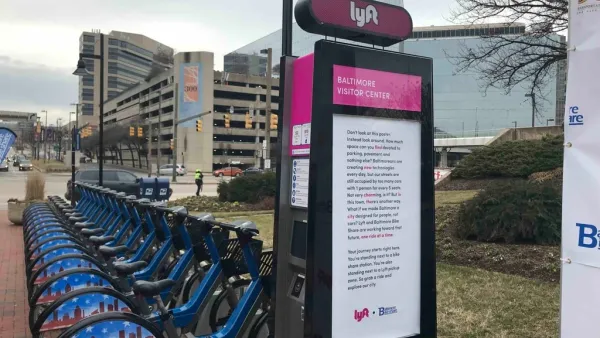With pooled services suspended through the pandemic and research showing most users prefer private rides, will shared rides continue to play a role in urban transportation?

As ride-hailing companies like Uber and Lyft faced backlash for producing more urban congestion with single-passenger trips, "pooled service seemed to offer a more city-friendly product," and autonomous vehicle producers also designed multi-person pods in preparation for a future of shared-ride transit. But with shared services largely on hold since the start of the pandemic, David Zipper, writing in Bloomberg CityLab, asks whether shared transportation can recover.
Back in February 2018, the nonprofit World Resources Institute unveiled the Shared Mobility Principles for Livable Cities, a set of guidelines that "included a commitment that autonomous vehicles would offer only shared trips within urban areas," according to Zipper. Since then, "a slew of evidence suggests that those who can afford to hail a vehicle would really prefer to have it to themselves," which is "worrisome news for public officials who hoped shared rides could help curb congestion — and for mobility companies who’ve pointed to sharing as a reason their products wouldn’t condemn cities to gridlock." While "sharing trips with strangers is the basic principle behind riding public transportation," sharing rides in private vehicles feels different than larger conveyances like trains or buses. "In a bad situation, you’re more likely to feel trapped in a ride-hail vehicle," making some users more reluctant to use shared rides even outside the public health risks posed by the pandemic.
Without policies to incentivize shared travel through increased convenience or lower cost, the dream of autonomous shared transit could devolve into a growing number of "individual AV trips grinding urban streets to a halt."
FULL STORY: Can Shared Mobility Survive the Pandemic?

Analysis: Cybertruck Fatality Rate Far Exceeds That of Ford Pinto
The Tesla Cybertruck was recalled seven times last year.

National Parks Layoffs Will Cause Communities to Lose Billions
Thousands of essential park workers were laid off this week, just before the busy spring break season.

Retro-silient?: America’s First “Eco-burb,” The Woodlands Turns 50
A master-planned community north of Houston offers lessons on green infrastructure and resilient design, but falls short of its founder’s lofty affordability and walkability goals.

Test News Post 1
This is a summary

Analysis: Cybertruck Fatality Rate Far Exceeds That of Ford Pinto
The Tesla Cybertruck was recalled seven times last year.

Test News Headline 46
Test for the image on the front page.
Urban Design for Planners 1: Software Tools
This six-course series explores essential urban design concepts using open source software and equips planners with the tools they need to participate fully in the urban design process.
Planning for Universal Design
Learn the tools for implementing Universal Design in planning regulations.
EMC Planning Group, Inc.
Planetizen
Planetizen
Mpact (formerly Rail~Volution)
Great Falls Development Authority, Inc.
HUDs Office of Policy Development and Research
NYU Wagner Graduate School of Public Service




























